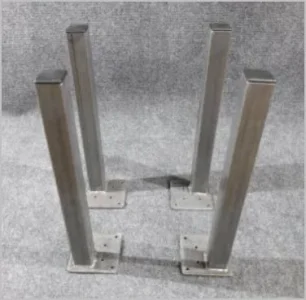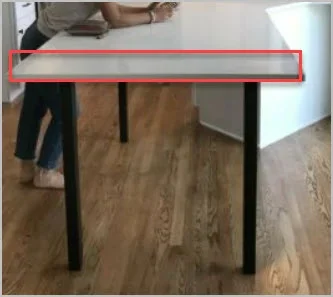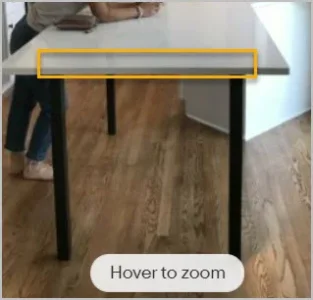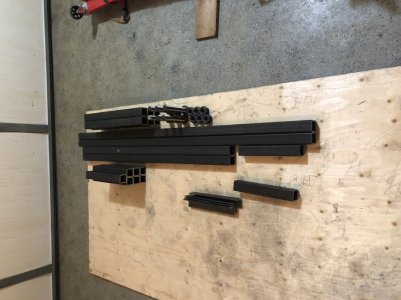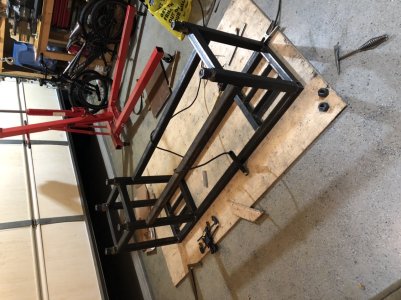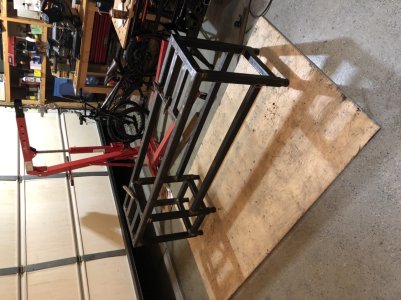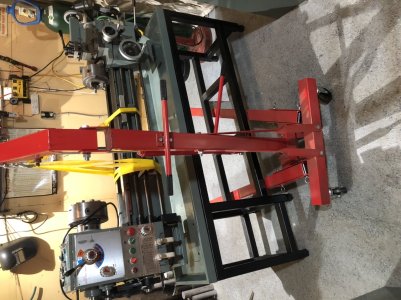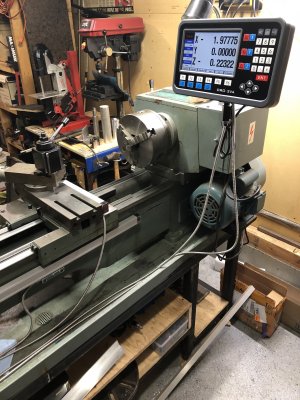I've been dragging my feet on a work bench to replace some mismatched 'pressed into service' tables that are not up to the task on multiple fronts. I want to accommodate my bench vise, some small footprint motorized machines and room for ‘one day’ acquisition like a belt grinder. I also need maximum underneath space for storage, basically shoe box sized boxes of fasteners, metal stock & whatnot.
My plan all along was to make wood tables because it’s somewhat familiar territory & tools on hand. I now want to compare to something made from steel tubing which would offer many advantages. So aside from cost & effort & other factors, I have some dumb questions maybe you experienced fabrication/welder types can provide feedback on.
So here is a sketch to kick things off. The table top is nominally 36x48". I figured plywood or MDF bolted through the frame. If I Swiss cheese it with holes or wear it out, simple enough to replace. I can squeeze double this width into the space. Making 2 twins vs 1 long one seems kind of silly on one hand, but also easy to separate & relocate in the future. Or maybe space them out slightly with a skinny storage rack in between. Anyways I don’t need continuous surface & I figure a long one would be an all-round bigger / heavier beast.
My plan all along was to make wood tables because it’s somewhat familiar territory & tools on hand. I now want to compare to something made from steel tubing which would offer many advantages. So aside from cost & effort & other factors, I have some dumb questions maybe you experienced fabrication/welder types can provide feedback on.
So here is a sketch to kick things off. The table top is nominally 36x48". I figured plywood or MDF bolted through the frame. If I Swiss cheese it with holes or wear it out, simple enough to replace. I can squeeze double this width into the space. Making 2 twins vs 1 long one seems kind of silly on one hand, but also easy to separate & relocate in the future. Or maybe space them out slightly with a skinny storage rack in between. Anyways I don’t need continuous surface & I figure a long one would be an all-round bigger / heavier beast.









